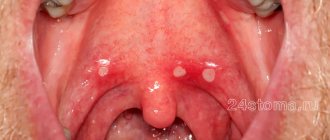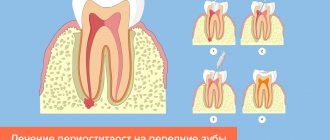Hearing loss can develop slowly or manifest itself acutely after injury, infection or other disease. In most patients, hearing loss occurs gradually, so the average time from the first symptoms to a visit to the doctor is 8-9 years. Unfortunately, late diagnosis of hearing loss reduces the chances of successful rehabilitation and return to normal life.
When describing this or that degree of hearing loss, experts talk not only about the results of instrumental studies, but also about the degree of a person’s limitations and the possibility of becoming disabled.
Classification of hearing impairment
The classifications of hearing loss are based on the following principles:
- type;
- onset time;
- symmetry;
- progression;
- localization (unilateral, bilateral);
- degree of loss of function.
Based on the type of damage, conductive, sensorineural or mixed hearing loss is distinguished. With conductive, the decrease occurs as a result of pathology of the sound wave (deformations of the organ, trauma, inflammation or infection of the outer, middle ear). Sensorineural hearing loss occurs due to pathology of the inner ear, nerve or cerebral cortex. Among the causes are chromosomal abnormalities, infections, maternal alcoholism during pregnancy, trauma, tumors, autoimmune processes, and age-related changes. The mixed type includes both lesions.
Based on the time of occurrence, congenital and acquired cases of pathology are distinguished.
Symptoms may appear acutely (for example, after taking medications), and then the hearing loss is called sudden. If the condition worsens over time, progressive hearing loss is diagnosed.
If changes develop synchronously in both ears, they speak of symmetrical hearing loss, otherwise - asymmetrical.
Audiologists distinguish 4 degrees of hearing impairment:
- 1st degree - mild;
- 2 degree - moderate;
- 3rd degree - severe;
- 4th degree - deep.
Diagnostic criteria are audiogram data and the degree of impact on normal functioning. A healthy person perceives sounds with an intensity of 20 to 20,000 dB and recognizes high and low frequency signals. Hearing loss is said to occur when the patient ceases to perceive signals whose intensity is in the range of 20 dB. The degrees of sensorineural hearing loss have the same basic characteristics as conductive hearing loss. The difference is a decrease in intelligibility for sounds of different frequencies.
The classification of hearing impairment is weakly related to the definition of disability, since the grounds for assigning benefits are:
- inability to compensate for hearing loss through surgery or technical means;
- loss of professional suitability due to the development of the disease;
- obtaining education at a specialized educational institution (for the duration of training).
When assessing the degree of disability, experts are guided by the indicators of the ear that hears better and often “remove” the disability when mastering the skills of sign language or lip reading. They explain the level of hearing loss that can qualify for disability benefits. So, with severe or profound impairments, a person can be given a 2 or 3 group disability. Group 1 is assigned only to persons with other serious illnesses.
Sensorineural (or sensorineural) hearing loss
This is a hearing impairment caused by damage to the sound-receiving apparatus: the inner ear, the vestibulocochlear nerve or the auditory centers of the brain. First, damage occurs to the outer hair cells, making it much more difficult to perceive quiet sounds. As a result, a person suffering from sensorineural hearing loss thinks that a sound of 50 dB sounds quiet, while a person with normal hearing perceives this sound quite comfortably.
There are the following reasons for the development of sensorineural hearing loss:
- Piggy
- Meningitis
- Multiple sclerosis
- Acoustic neuritis
- Age-related hearing loss
- Loud noise without protection from it
- Maternal rubella during pregnancy
- Impaired blood supply to the auditory nerve
- Certain medications (cisplatin, quinine, some antibiotics)
- Increased pressure of the fluids of the inner ear (Meniere's disease).
Sensorineural hearing loss, unfortunately, is not subject to either surgical or drug treatment and can be compensated by selecting hearing aids.
Mild hearing loss (grade 1 hearing loss)
Patients with such hearing loss are in no hurry to see a doctor. They stop paying attention to quiet background sounds: birds singing, the ticking of a clock, the sound of water drops. People report difficulty understanding whispered speech or have difficulty conversing in a noisy room. According to the examination, the diagnostic criteria for this degree are:
- perception threshold – from 26 to 40 dB;
- perception of spoken speech – from 6 to 3 m;
- perception of whispered speech – from 2 m or less.
This degree often does not interfere with coping with production responsibilities and everyday issues.
Symptoms
The main symptom of hearing loss is decreased hearing. This is expressed:
- difficulty recognizing the interlocutor’s speech;
- in frequent questioning and requests to repeat what was said;
- in the desire to increase the volume of the TV or sound playing device;
- involuntary raising of voice when speaking;
- in rapid fatigue when trying to concentrate on a specific sound.
Signs of hearing loss in young children who cannot yet speak:
- the ability to hear certain sounds while ignoring others;
- lack of reaction to a loud sound (the child does not turn to its source until the age of 4 months);
- lack of speech by 1 year of life;
- lack of reaction to the named name, the child notices the speaker only with visual contact;
Moderate - mild hearing loss (grade 2 hearing loss)
Moderate impairments make it clear to a patient with hearing loss that he has certain difficulties in perceiving sound information. He may not hear the phone ringing or the noise of office equipment. In everyday life or at work, such a person will begin to ask interlocutors more often. And if someone addresses him in a noisy room, the patient with hearing loss simply will not hear the speech.
Moderate degree is diagnosed with the following test results:
- perception threshold – from 41 to 55 dB;
- perception of spoken language – from 3 m or less;
- perception of whispered speech - near the auricle.
Conductive hearing loss
This is a hearing disorder associated with problems with sound transmission either in the ear canal itself or in the middle ear. Conductive hearing loss occurs at the level of the external auditory canal or middle ear. Among the causes of conductive hearing loss are:
- At the level of the outer ear: tumors, otitis externa, malformations, cerumen plugs.
- At the levels of the middle ear: otosclerosis, damage to the auditory ossicles, acute and chronic otitis media, dysfunction of the auditory (Eustachian) tube.
In some cases, conductive hearing loss can be treated with medication or surgery. In other cases, hearing aids are used for this, since the organ of Corti in the cochlea continues to function normally and the main problem is only overcoming an obstacle in the outer or middle ear.
Severe hearing loss (grade 3 hearing loss)
It will not be possible to hide a severe degree of hearing loss from yourself or others. A person with such hearing loss can only hear spoken speech at a close distance if the interlocutor pronounces the words clearly and loudly. He perceives the usual sounds of a big city - screams, car horns, industrial noise. But a collective conversation at a meeting or talking on the phone already causes difficulties.
Severe hearing loss may be the basis for disability group 3. It is characterized by the following parameters:
- perception threshold – from 56 to 70 dB;
- perception of spoken language – directly next to the auricle;
- perception of whispered speech is impossible.
Causes
The main causes of acquired hearing loss are:
- age;
- loud noise;
- hearing diseases;
- injuries.
Congenital hearing loss can be caused by:
- when passing genes from one of the parents;
- the impact of negative factors on the mother’s body and fetus during gestation.
With age, all of a person's senses weaken: vision, smell, hearing and touch. By the age of 50, up to 20% of people have hearing loss, by the age of 70 - over 30%.
Modern man is surrounded by a large number of loud sounds: music in the headphones of the player, at large concerts and discos, the noise of production equipment, and transport. A sharp, loud sound near a person can deprive one of the ability to hear for a long time.
The cause of hearing impairment is often cerumen plug - an accumulation of earwax, sebaceous and secretory gland secretions in the external auditory canal. Earwax is a protective agent that protects the ear from harmful microorganisms, hypothermia, and dead skin particles. If you clean your ear with a cotton swab, pushing the wax deep into the canal, it accumulates and completely blocks the auditory opening, reducing hearing.
Scars on the eardrum that form after suffering from otitis media impair its elasticity: the membrane transmits air vibrations with less efficiency, which also affects the quality of hearing.
Deafness
Deafness is understood as either a complete absence of hearing, or such a pronounced decrease in which a person does not understand spoken speech, and the perception threshold exceeds 91 dB. Absolute deafness is a rare occurrence. More often, such a patient retains the perception of sounds spoken near the auricle, but he is not able to form words from them. It is this feature that makes it possible to distinguish grade 4 hearing loss from deaf-muteness, although audiologists admit that such a boundary is very arbitrary.
The occurrence of deafness before the child begins to speak leads to the development of deaf-muteness.
Diagnosis and treatment of hearing loss
In the department of otorhinolaryngology of the multidisciplinary clinic "MedicCity" you will quickly and accurately be diagnosed using special diagnostic procedures and first-class equipment from the world's leading manufacturers.
A special study - audiometry - is aimed at determining the degree of hearing loss. This study also evaluates the effectiveness of treatment for hearing loss. Tuning fork tests and impedance measurements are also carried out .
1 Audiometry in MedicCity
2 Audiometry in MedicCity
3 Audiometry in MedicCity
Depending on the identified factors, one or another type of treatment is prescribed: conservative (taking anti-inflammatory drugs, physiotherapy - electrophoresis, phonophoresis, etc.), surgical (for example, removal of sclerotized tissue or correction of an anatomical defect).
Special procedures are used to clean the ear in case of suppuration, plugs, etc. A very common procedure for cleaning the auditory tube is by blowing it according to Politzer, using a special balloon.
We have also developed comprehensive treatment programs for sensorineural hearing loss.
Hearing Loss Summary Table
Brief information about the degrees of hearing impairment is presented in the table.
| Degree of reduction | Hearing threshold values at standard frequencies (in dB) | At what distance does a person perceive spoken language? | At what distance does a person perceive a whisper? |
| Healthy man | 0-25 | More than 10 m | 6 m |
| 1 | 26-40 | From 6 to 3 m | From 2 m – to the auricle |
| 2 | 41-55 | From 3 m or less | Next to the ear |
| 3 | 56-70 | Loud near the ear | Perception is impossible |
| 4 | 71-90 | Only a loud scream next to the ear | Perception is impossible |
| deafness | More than 90 | Perception is impossible | Perception is impossible |
Auditory (auditory neuropathy)
With auditory neuropathy, the endings of the auditory nerve most often remain intact and can perceive surrounding sounds in full. However, as nerve impulses travel along the auditory nerve to the brain, sound information is decoded and distorted. This is why detecting and correcting this type of hearing loss is so difficult.
More information about the development of auditory neuropathy in children can be found here.
How to reduce the risk of developing hearing loss
To reduce the likelihood of sensorineural hearing loss, you should adhere to simple preventive measures:
- Avoid prolonged or repeated exposure to loud noise. For example, wear hearing protection when working with noisy tools. Do not attend concerts and clubs where loud music is played. The noise at a rock concert reaches the same level as the roar of jet engines (140 decibels);
- use headphones instead of turning up the volume when there is noise;
- Be careful when using antibiotics belonging to the aminoglycoside group. They are ototoxic, meaning they can negatively affect the hearing organs. Some other drugs also have similar properties.
Complications of the disease
Complications of the disease usually arise due to the lack of timely therapy or improper treatment.
Inflammatory processes in the ear that cause hearing loss can become chronic. The patient will suffer from exacerbations of the disease up to several times a year. This will negatively affect the sound transmission mechanism and cause periodic hearing problems.
Inflammation can spread to nearby structures, such as the temporomandibular joint. Its dysfunction may develop, and it will become difficult for a person to chew and open his mouth. Headaches will appear, discomfort and tinnitus will increase.
If the inflammation spreads to the inner ear, the process of sound perception may suffer, and in addition to conductive hearing loss, sensorineural hearing loss will develop. In this case, restoring hearing will be very difficult and not always possible.










